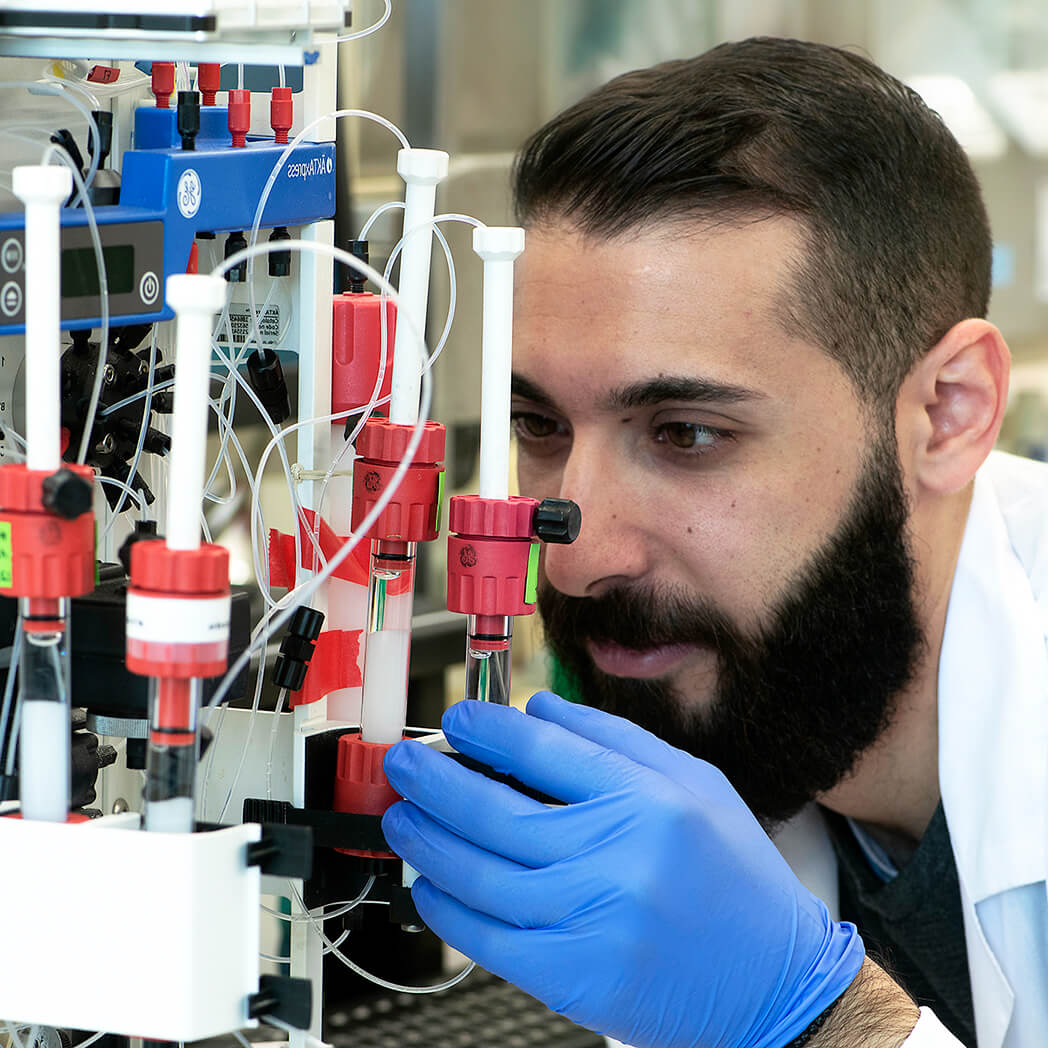Overview
Cat #:
Size:
100 mg
Lot:
P130SM01100
Alternative Name Pavulon®
Lyophilized Powder yes
Source Synthetic
MW: 732.67
Purity: >99%.
Effective concentration 2 nM - 20 μM.
Chemical name 1,1'-(3α,17β-Dihydroxy-2β,5α-androstan-2β,16β-ylene) bis[1-methylpiperidinium] diacetate dibromide.
Molecular formula C35H60Br2N2O4.
CAS No.: 15500-66-0
Activity Pancuronium bromide is a nicotinic (neuromuscular) antagonist and a skeletal muscle relaxant1. It blocks nicotinic acetylcholine receptor (nAChR) currents with an IC50 of 5.5 nM in BC3H-1 cells expressing embryonic mouse muscle nAChR2 and its Ki value for the receptor is 0.9 nM3.
References-Activity
- Buckett, W.R. et al. (1968) Br.J. Pharmacol. 32, 671.
- Wenningmann, I. et al. (2001) Mol. Pharmacol. 60, 790.
- Filatov, G.N. et al. (1993) Mol. Pharmacol. 44, 237.
Shipping and storage Shipped at room temperature. Product as supplied can be stored intact at room temperature for several weeks. For longer periods, it should be stored at -20°C. Up to six months in a desiccant in a cool place, keep container tightly closed in a dry and well-ventilated place.
Solubility Water, ethanol and methanol. Centrifuge all product preparations before use (10000 x g 5 min).
Storage of solutions Up to four weeks at 4°C or three months at -20°C.
Our bioassay
 Alomone Labs Pancuronium bromide inhibits α7 nAChR heterologously expressed in Xenopus oocytes.A. Current traces of α7 nAChR activity at -60 mV holding potential. Currents were elicited by applications of 100 μM acetylcholine every 100 seconds. Inhibition of these induced currents was achieved upon perfusion of 0.2, 2 or 20 μM Pancuronium bromide (#P-130) (indicated by the horizontal bars). B. Superimposed traces of α7 nicotinic ACh channel current in the absence or presence of 0.2, 2 or 20 μM Pancuronium bromide, as indicated (taken from the experiment described in A).
Alomone Labs Pancuronium bromide inhibits α7 nAChR heterologously expressed in Xenopus oocytes.A. Current traces of α7 nAChR activity at -60 mV holding potential. Currents were elicited by applications of 100 μM acetylcholine every 100 seconds. Inhibition of these induced currents was achieved upon perfusion of 0.2, 2 or 20 μM Pancuronium bromide (#P-130) (indicated by the horizontal bars). B. Superimposed traces of α7 nicotinic ACh channel current in the absence or presence of 0.2, 2 or 20 μM Pancuronium bromide, as indicated (taken from the experiment described in A).
Target nAChRs
Lyophilized Powder
For research purposes only, not for human use
Last Update: 30/03/2021
Specifications
Citations
Citations

